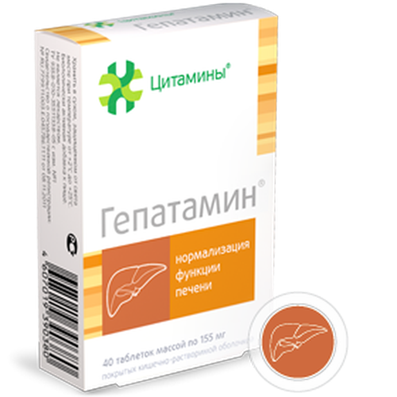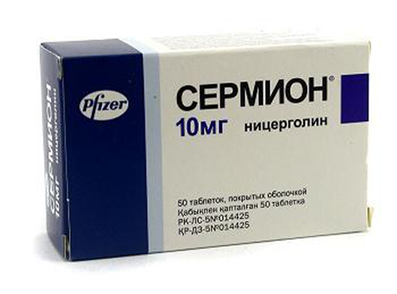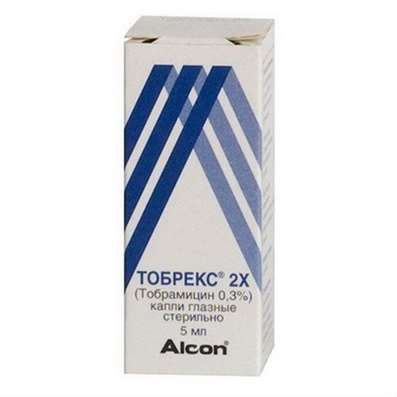Instruction for use: Nantarid
I want this, give me price
Dosage form: film coated tablets
Active substance: Quetiapine*
ATX
N05AH04 Quetiapine
Pharmacological group:
Neuroleptics
The nosological classification (ICD-10)
F20 Schizophrenia: Schizophrenic conditions; Exacerbation of schizophrenia; Schizophrenia; Chronic schizophrenia; Dementia praecox; Bleuler's disease; Psychotic discordant; Dementia early; The febrile form of schizophrenia; Chronic schizophrenic disorder; Psychosis of the schizophrenic type; Acute form of schizophrenia; Acute schizophrenic disorder; Cerebral Organic Insufficiency in Schizophrenia; Acute attack of schizophrenia; Schizophrenic psychosis; Acute schizophrenia; Sluggish schizophrenia; Sluggish schizophrenia with apathoabulic disorders; Acute stage of schizophrenia with excitation
F29 Inorganic psychosis, unspecified: Childhood psychoses; Psychomotor agitation in psychoses; Hallucinatory-delusional disorders; Hallucinatory-delusional syndrome; Intoxication psychosis; Manic-delusional disorders; Manic chronic psychosis; Manic psychosis; Acute psychosis; paranoid psychosis; Paranoid psychosis; Subacute psychosis; Presenile psychosis; Psychosis; Intoxicating psychosis; Psychosis is paranoid; Psychosis in children; Reactive psychosis; Chronic psychosis; Chronic hallucinatory psychosis; Chronic psychosis; Chronic psychotic disorder; Schizophrenic psychosis
F31 Bipolar affective disorder: Mood disorders bipolar; Affective bipolar psychosis; Manic-melancholic psychosis; Intermittent psychosis; Circular psychosis; Cyclophrenia; Bipolar disorders; Bipolar psychosis; Affective insanity; Manic-depressive syndrome; Psycho Manic-Depressive; Depressive episode of bipolar disorder
F31.1 Bipolar affective disorder, current episode of mania without psychotic symptoms: Mania in bipolar disorders
F31.2 Bipolar affective disorder, current episode of mania with psychotic symptoms: Manic episode of bipolar disorder; Mania in bipolar disorders
Composition
Tablets covered with a film membrane 1 tab.
active substance:
quetiapine fumarate 28.783 mg; 115.13 mg; 230.26 mg; 345.39 mg
(equivalent to 25/100/200/300 mg of quetiapine, respectively)
auxiliary substances: calcium hydrophosphate anhydrous - 12,567 / 50,27 / 100,54 / 150,81 mg; lactose monohydrate - 1/4/8/12 mg; MCC - 12/48/96/144 mg; sodium carboxymethyl starch - 2.75 / 11/22/33 mg; povidone - 2/8/16/24; magnesium stearate - 0.9 / 3.6 / 7.2 / 10.8 mg
film sheath
tablets 25 mg: Opadry® pink 03B84929 (hypromellose 1.25 mg, titanium dioxide 0.567 mg, macrogol 400 0.125 mg, iron oxide yellow oxide 0.03 mg, iron oxide red oxide 0.028 mg) 2 mg
100 mg tablets: Opadry® yellow 03B82923 (hypromellose - 3.75 mg, titanium dioxide 1.695 mg, macrogol 400 0.375 mg, iron oxide oxide yellow 0.18 mg) 6 mg
200 mg tablets: Opadry® white Y-1-7000 (hypromellose 7.5 mg, titanium dioxide 3.75 mg, macrogol 400 0.75 mg) 12 mg
tablets 300 mg: Opadry® white Y-1-7000 (hypromellose - 11.25 mg, titanium dioxide - 5.625 mg, macrogol 400 - 1.125 mg) - 18 mg
Description of dosage form
Tablets of 25 mg: round, biconcave, covered with a film coat of yellow-pink color.
Tablets of 100 mg: round, biconcave, film-coated yellow, with risk on one side.
Tablets of 200 mg: round, biconcave, film-coated from white to almost white.
Tablets 300 mg: in the form of capsules, coated with a film shell from white to almost white, with a risk on one side.
Pharmachologic effect
Pharmacological action - antipsychotic.
Pharmacodynamics
Antipsychotic agent (antipsychotic). Has a higher affinity for serotonin (5-HT2) receptors than for dopamine receptors (D1 and D2) of the brain. Has an affinity for histamine and α1-adrenoreceptors, less active with respect to α2-adrenergic receptors. There was no selective affinity for cholinergic muscarinic and benzodiazepine receptors. Reduces the activity of mesolimbic A10-dopaminergic neurons, in comparison with A9-nigrostriate neurons involved in motor functions. Does not cause a prolonged increase in the concentration of prolactin. The duration of communication with 5-HT2-serotonin and D2-dopamine receptors is less than 12 h after administration of the drug.
Pharmacokinetics
Suction
When oral administration is well absorbed from the digestive tract. Absorption is high, food intake does not affect bioavailability.
Distribution
Quetiapine approximately 83% binds to plasma proteins. The pharmacokinetics of quetiapine is linear and does not differ between men and women.
Metabolism
It is actively metabolized in the liver with the formation of pharmacologically inactive metabolites under the influence of cytochrome P450 isoenzyme CYP3A4. Quetiapine and some of its metabolites have a weak inhibitory effect on cytochrome isoenzymes CYP1A2, CYP2C9, CYP2C19, CYP2D6 and CYP3A4, but only in concentrations 10-50 times higher than those occurring at the usual dose of 300-450 mg / day.
Excretion
It is excreted by the kidneys 73%, through the intestines - 21%. T1 / 2 approximately 7 hours. Less than 5% of quetiapine is not metabolized and is excreted unchanged by the kidneys or through the intestine.
Pharmacokinetics in special clinical cases
The average clearance of quetiapine in elderly patients is 30-50% less than that observed in patients aged 18 to 65 years. In patients with cirrhosis of the liver, T1 / 2 slightly increases, and the bioavailability of the drug decreases (dose adjustment may be required). The mean plasma clearance of quetiapine was less than approximately 25% in patients with severe renal impairment (Cl creatinine less than 30 ml / min / 1.73 m2) and patients with liver damage (alcohol cirrhosis in the compensation stage), but individual clearance rates were in limits corresponding to healthy people.
Indications for the Nantarid
acute and chronic psychoses, including schizophrenia;
manic episodes in bipolar disorder.
Contraindications
hypersensitivity to quetiapine or other components of the drug;
lactose intolerance, lactase deficiency, glucose-galactose malabsorption (in the drug form of the drug contains lactose);
the period of breastfeeding;
children and adolescents under 18 years of age (efficacy and safety not established).
With caution: cardiovascular and cerebrovascular diseases; arterial hypotension; congenital syndrome of QT interval elongation or the presence of conditions potentially capable of inducing prolongation of the QT interval (simultaneous administration of drugs prolonging the QT interval, congestive heart failure, hypokalemia, hypomagnesemia); patients with risk of venous thromboembolism; hypothyroidism; diabetes; elderly age; liver failure; epilepsy; convulsive seizures in the anamnesis; pregnancy.
Application in pregnancy and lactation
Safety and effectiveness of use in pregnancy is not established. Therefore, in pregnancy, Nantarid® can be used only if the expected benefit to the mother exceeds the potential risk to the fetus. The degree of excretion of quetiapine with human milk is unknown. If Nantarid® is needed, breastfeeding should be discontinued during lactation.
Side effects
Side effects observed with the use of the drug are classified into categories depending on the frequency of their occurrence: very often - ≥1 / 10; often - ≥1 / 100, <1/10; infrequently - ≥1 / 1000, <1/100; rarely - ≥1 / 10000, <1/1000; very rarely - <1/10000, including individual messages.
On the part of the hematopoiesis system: often - leukopenia; infrequently - eosinophilia, thrombocytopenia; very rarely - neutropenia.
Metabolic and nutritional disorders: often - weight gain (mainly in the first weeks of treatment), hyperglycemia or decompensation of diabetes mellitus; very rarely - diabetes.
From the nervous system: very often - dizziness, drowsiness, headache; often syncope, unusual and nightmarish dreams, fainting, extrapyramidal symptoms, anorexia; infrequently - anxiety, hostility, agitation, insomnia, akathisia, tremor, convulsions, depression, dysarthria, paresthesia; rarely - malignant neuroleptic syndrome (hyperthermia, muscle rigidity, altered mental status, lability in the autonomic nervous system, increased activity of CK); very rarely - tardive dyskinesia.
On the part of the CAS: often - orthostatic hypotension, palpitations, tachycardia, increased blood pressure, prolongation of the QT interval on the ECG; individual reports - the risk of venous thromboembolism.
From the side of the digestive system: very often - dry mouth; often - nausea, vomiting, diarrhea or constipation, dyspepsia; infrequently - dysphagia; rarely - abdominal pain, jaundice; very rarely - hepatitis.
From the respiratory system: often - pharyngitis, rhinitis.
Allergic reactions: infrequent - skin rash, hypersensitivity reactions; very rarely - angioedema, Stevens-Johnson syndrome.
From the side of the reproductive system: rarely - priapism (painful erection).
From the side of the organ of vision: often - blurred vision.
Laboratory indicators: very often - hypercholesterolemia, hypertriglyceridemia; often - increased activity of liver transaminases; infrequent increase in GGT activity, decrease in the concentration of total and free T4 (the first 4 weeks), as well as in general T3 and reversible T3 (only with high doses of quetiapine), increased activity of CKK, not associated with malignant neuroleptic syndrome.
Other: very often - withdrawal syndrome; often - peripheral edema, asthenia, increased sweating; rarely - back pain, chest pain, subfebrile condition, myalgia, dry skin, weak eyesight.
Interaction
When concurrently prescribing drugs with a strong inhibitory effect on the CYP3A4 isoenzyme (such as the azole antifungal agents and macrolide antibiotics), the concentration of quetiapine in the plasma may increase. In such cases, lower doses of Nantarid® should be used. Particular attention should be paid to elderly and weakened patients. It is necessary to individually evaluate the relationship between risk and benefit for each patient.
With the simultaneous administration of Nantarid® with carbamazepine and phenytoin inducing microsomal liver enzymes, a decrease in plasma drug concentration is possible, which may require an increase in the dose of Nantarid®, depending on the clinical effect. This should also be taken into account when removing phenytoin, carbamazepine or other inducer of microsomal liver enzymes or substituting for a drug that does not induce microsomal liver enzymes (eg valproic acid).
Quetiapine does not induce the induction of microsomal liver enzymes involved in the metabolism of phenazone.
The pharmacokinetics of quetiapine does not change with simultaneous use of cimetidine (inhibitor P450), fluoxetine antidepressants (inhibitor CYP3A4 and CYP2D6) or imipramine (inhibitor CYP2D6).
The pharmacokinetics of quetiapine did not change significantly when taken concomitantly with risperidone, haloperidol, lithium preparations, and valproic acid preparations. However, simultaneous administration of quetiapine with thioridazine led to an increase in the clearance of quetiapine.
Drugs that depress the central nervous system, and ethanol increase the risk of side effects.
With the simultaneous administration of quetiapine 750 mg / day and lorazepam 2 mg once, the lorazepam clearance was reduced by 20%.
Dosing and Administration
Inside, 2 times a day, regardless of food intake.
Treatment of acute and chronic psychoses, including schizophrenia. The daily dose for the first 4 days of therapy: 50 mg - the first day, 100 mg - the second day, 200 mg - the third day, 300 mg - the 4th day. Starting from the 4th day the dose should be selected up to an effective dose ranging from 300 to 450 mg / day. Depending on the clinical effect and tolerability of the drug, the dose may vary from 150 to 750 mg / day.
Treatment of manic episodes in bipolar disorder. The daily dose for the first 4 days of therapy is: the 1st day - 100 mg, the second day - 200 mg, the third day - 300 mg, the 4th day - 400 mg. Further, within 6 days, the daily dose is increased to 800 mg, but not more than 200 mg / day. Depending on the clinical effect and tolerability of the drug, the dose may vary from 200 to 800 mg / day. The effective dose is from 400 to 800 mg / day.
Elderly age. The plasma clearance of quetiapine in elderly people is reduced by 30-50% compared to young patients, so prescribing the drug should be done with caution, especially at the beginning of treatment. The starting dose is 25 mg / day, followed by an increase of 25-50 mg / day, until the effective dose is reached.
Renal and hepatic insufficiency. In renal and / or liver failure, quetiapine should be treated with 25 mg / day, followed by a daily increase of 25-50 mg, until an effective dose is reached.
The safety and efficacy of the drug in children and adolescents have not been investigated.
Overdose
Data on drug overdose are limited. The cases of taking quetiapine in a dose exceeding 20 g are described, without fatal outcomes and with the coping of side effects without consequences. Very rarely reported cases of overdose of quetiapine, which led to an elongation of the QT interval, coma or death.
Symptoms: excessive sedation, drowsiness, tachycardia, arterial hypotension.
Treatment: there are no specific antidotes of quetiapine. In case of an accidental overdose within 1 h after the reception, it is necessary to consider the possibility of symptomatic therapy and it is recommended to carry out activities aimed at maintaining the function of respiration, CVS, ensuring adequate oxygenation and ventilation. Medical supervision and surveillance should be continued until the patient is fully recovered.
Special instructions
With a sharp cancellation of high doses of antipsychotic drugs, the following acute reactions (withdrawal syndrome) can occur: nausea, vomiting; rarely - insomnia.
Cases of exacerbation of psychotic symptoms and the appearance of involuntary motor disorders (akathisia, dystonia, dyskinesia) have been reported. In this regard, it is recommended to gradually phase out the drug.
Given that quetiapine mainly affects the central nervous system, Nantharide® should be used with caution in combination with other drugs that have an inhibitory effect on the central nervous system. It is recommended to refrain from drinking alcohol.
When symptoms of tardive dyskinesia appear, reduce the dose or stop using quetiapine.
Caution should be exercised when prescribing quetiapine concomitantly with drugs that extend the QT interval, especially in the elderly, patients with congenital QT interval elongation, congestive heart failure, myocardial hypertrophy, hypokalemia, and hypomagnesemia.
Malignant neuroleptic syndrome can be associated with ongoing antipsychotic treatment. Clinical manifestations of the syndrome include hyperthermia, altered mental status, muscular rigidity, instability of the autonomic nervous system, increased activity of CK. With the development of this syndrome, quetiapine should be withdrawn and treated accordingly.
In patients with prolonged use of quetiapine, cataracts were reported. In this regard, an ophthalmological examination should be conducted before the start of therapy and once every 6 months with prolonged use of drugs. As with other antipsychotics, caution should be exercised in the treatment of patients with a history of seizures.
There are some reports of the risk of venous thromboembolism in the use of antipsychotic drugs. Before and during quetiapine treatment, all possible risk factors for venous thromboembolism should be identified and preventive measures taken.
Influence on the ability to drive vehicles and work with other mechanisms. Nantaride® can cause drowsiness, so patients are advised not to work with mechanisms that present a danger, incl. it is not recommended to drive and engage in other potentially dangerous activities that require increased concentration and speed of psychomotor reactions.
Release form
Film-coated tablets, 25 mg, 100 mg, 200 mg and 300 mg.
Tablets 25 mg. In the blister of PVC / PE / PVDC-aluminum foil of 10 pcs. 3 blisters in a cardboard box.
Tablets of 100 mg. In the blister of PVC / PE / PVDH-aluminum foil of 10 pcs. 3 or 6 blisters in a cardboard box.
Tablets 200 mg. In the blister of PVC / PE / PVDC-aluminum foil of 10 pcs. 6 blisters in a cardboard box.
Tablets 300 mg. In the blister of PVC / PE / PVDC-aluminum foil of 10 pcs. 6 blisters in a cardboard box.
Conditions of leave from pharmacies
On prescription.
Storage conditions of the drug Nantarid
At temperatures not higher than 30 ° C.
Keep out of the reach of children.
Shelf life of the drug Nantarid
4 years.
Do not use after the expiry date printed on the package.

 Cart
Cart





